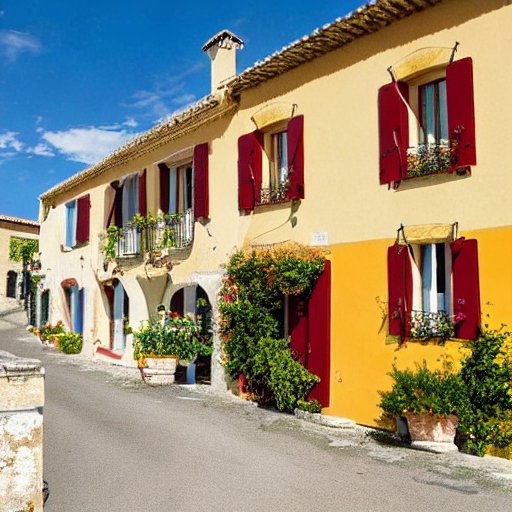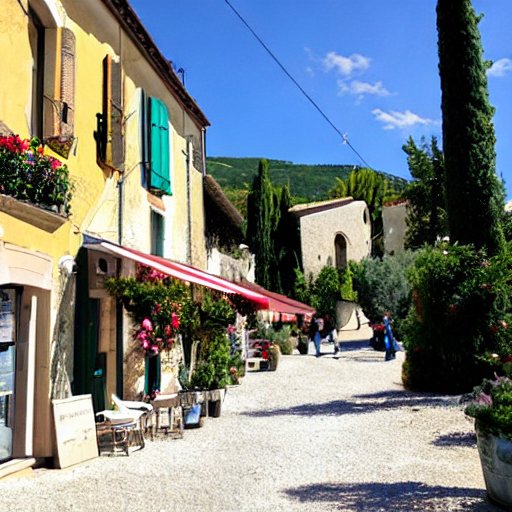Valbonne boasts a rich architectural heritage that spans various periods and styles. This architectural diversity includes older village houses, as well as larger properties on the town’s outskirts. While these older properties offer undeniable charm, they also come with their fair share of challenges. We delve into the pros and cons of buying an older property in Valbonne, from traditional materials and upgrading solutions to the French planning system and local labor market.
Pros of Buying an Older Property
- Architectural Charm and Character: One of the most significant advantages of purchasing an older property in Valbonne is the inherent charm and character they offer. These historic buildings, with their traditional Provençal architecture, wooden shutters, and terracotta-tiled roofs, provide a unique ambiance that is difficult to replicate in newer constructions.
- Prime Locations: Many older properties in Valbonne are situated in prime locations, such as the heart of the Old Town or on spacious plots on the town’s outskirts. These sought-after locations provide convenient access to local amenities and stunning views of the surrounding countryside.
- Potential for Appreciation: Older properties often have the potential for significant value appreciation, especially if they are thoughtfully restored and modernized. By investing in upgrades and renovations, buyers can unlock the hidden value of these historic gems.
- Unique Features: Older properties in Valbonne often boast unique architectural features, such as ornate wrought-iron balconies, decorative friezes, and exposed stone walls. These distinctive elements can enhance the property’s appeal and add to its resale value.

Cons of Buying an Older Property
- Maintenance and Upkeep: One of the primary challenges of owning an older property in Valbonne is the ongoing maintenance and upkeep required to preserve its structural integrity and appearance. Traditional materials, such as plaster, stone, and wood, can be more susceptible to wear and tear, necessitating regular repairs and replacements.
- Upgrading and Modernizing: These properties may require significant upgrades and modernization to meet contemporary living standards. This can include updating outdated plumbing and electrical systems, improving energy efficiency, and installing modern amenities, such as central heating and air conditioning. These upgrades can be time-consuming and costly, and buyers should factor in these expenses when considering an older property. Particular care must be taken with the Fosse Septique as many sales are now subject to an upgraded Fosse system being in place and this can add up to 20 000 euros for the installation of a new system as well as upheaval to the garden if it has to be relocated.
- French Planning System: The French planning system places certain limitations on the redevelopment of older properties in Valbonne. These restrictions are designed to preserve the town’s architectural heritage and protect the local environment. As a result, buyers may face challenges when seeking permission for significant alterations or expansions, and they should consult with local planning authorities before embarking on any renovation projects. Certain aspects such as the colour of outside house paint are controlled and renovations must follow these rules. Similarly solar panels may face restrictions on roof placement and rules for these are decided at a Marie level so it pays to check!
- Town houses in the centre of the village have controls on their appearance and internal structures. It is essential to understand what can be achieved before you buy. Luckily there are many architects in the village and you can easily find one that is fluent or native in your language but still has good ties and a strong working relationship to the Marie.
- Labor Market and Tradesmen: The labor market in Valbonne, as in the rest of France, operates under a unique set of rules and regulations. This can affect the availability and cost of skilled tradesmen, such as builders, plumbers, and electricians, who are essential for carrying out renovations and upgrades. Buyers should be prepared to navigate the local labor market and establish relationships with reputable tradesmen to ensure a successful renovation project.
Upgrading Solutions for Older Properties in Valbonne
When upgrading an older property in Valbonne, buyers should consider several key factors to ensure a successful outcome. First, it is essential to choose materials and techniques that respect the building’s traditional architecture and character. This may include using lime-based plaster for repairs, sourcing reclaimed terracotta tiles for roofing, and employing local artisans for bespoke ironwork and joinery.

Second, buyers should prioritize energy efficiency and sustainability when modernizing their older property. This may involve upgrading insulation, installing energy-efficient windows and doors, and incorporating renewable energy sources such as solar panels or heat pumps. By focusing on energy efficiency, property owners can reduce their long-term utility costs and contribute to a more sustainable future.
Finally, it is important to work closely with local planning authorities and conservation groups when undertaking renovations and upgrades. These organizations can provide valuable guidance and support to ensure that any changes to the property align with local regulations and respect Valbonne’s architectural heritage.
In conclusion, buying an older property in Valbonne offers numerous advantages, including architectural charm, prime locations, potential for appreciation, and unique features. However, these historic gems also come with their fair share of challenges, such as maintenance and upkeep, upgrading and modernizing, navigating the French planning system, and understanding the local labor market.
With the right approach to upgrades and renovations, these historic properties can be transformed into comfortable, energy-efficient homes that blend seamlessly with their surroundings, preserving the town’s architectural heritage for future generations to enjoy.


